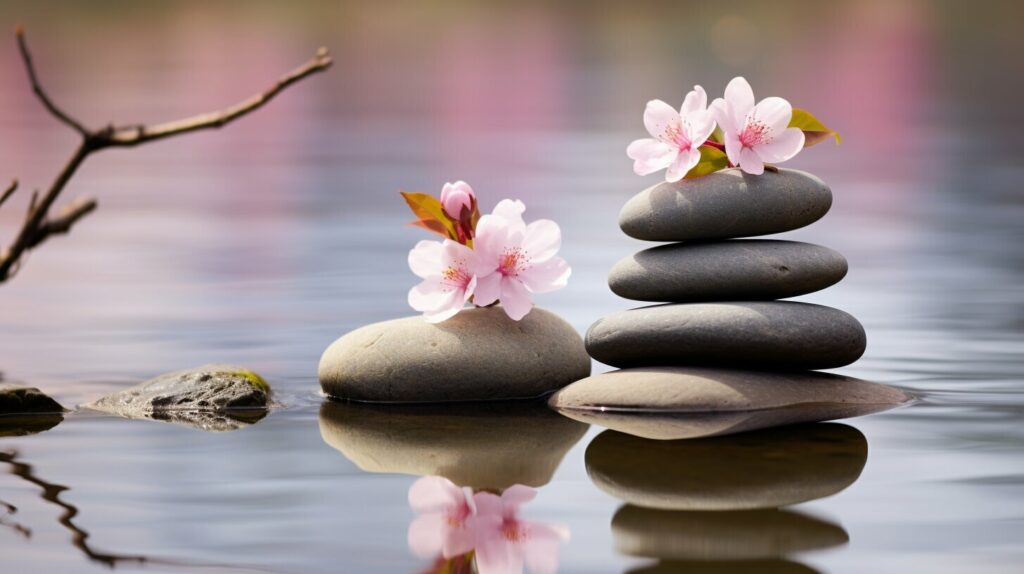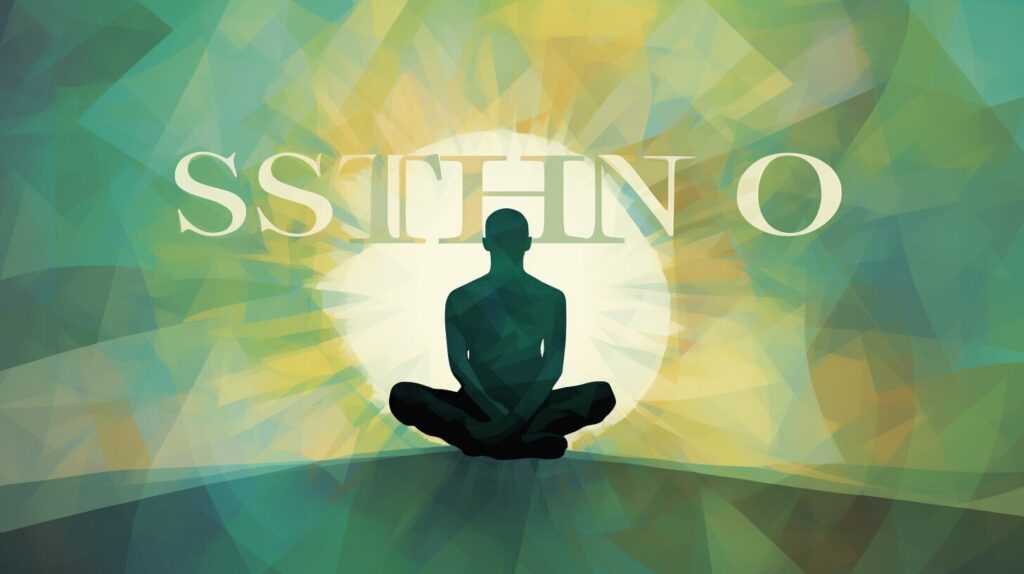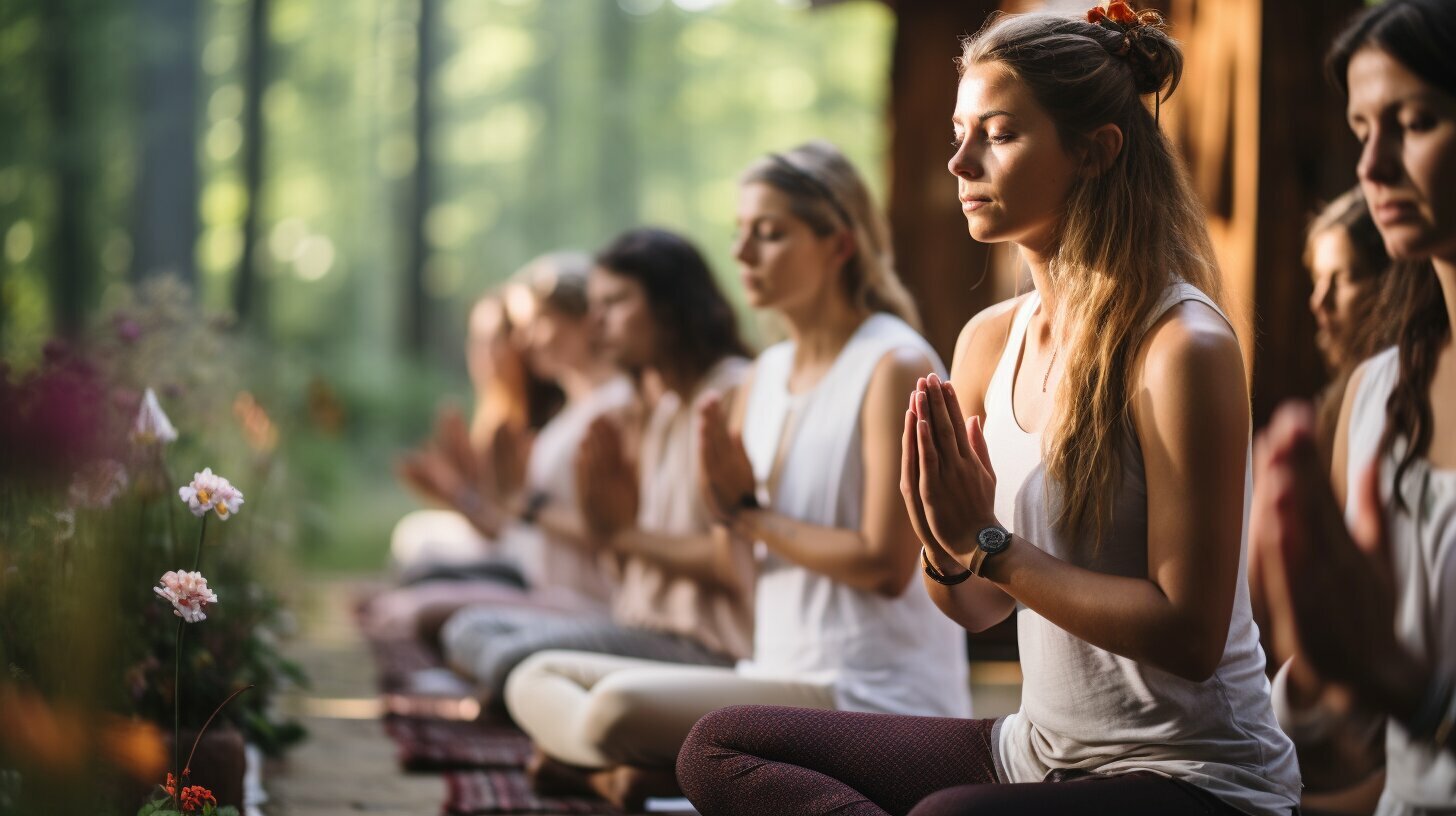Yoga is more than just a physical practice, it is a holistic approach to wellness that combines movement, breath, and mindfulness. At the beginning of a yoga class, the words spoken by the instructor can set the tone for the entire session, creating a safe and welcoming space for practitioners to deepen their practice. So, what do you say at the beginning of yoga? Let’s explore the various greetings, opening phrases, and rituals used to initiate a yoga practice.
From the traditional Sanskrit phrases to the more modern start phrases, the words spoken at the beginning of a yoga class provide a sense of community and connection among practitioners. Yoga greetings play a significant role in creating a tranquil and inclusive environment for individuals of all backgrounds and experience levels.
Whether it is a calming meditation, a simple greeting, or an elaborate ceremony, the choice of words at the beginning of a yoga practice can set the tone for the entire session. These words can help practitioners tap into their inner strength, cultivate mindfulness, and find a sense of peace amidst the chaos of daily life.
In this article, we will explore the importance of yoga greetings, traditional opening phrases, common start phrases, and the significance of the yoga opening ceremony. We will also examine how yoga’s initial words can inspire and motivate individuals in their yoga journey.
Key Takeaways:
- The words spoken at the beginning of a yoga practice set the tone for the entire session.
- Yoga greetings create a welcoming and inclusive environment for practitioners.
- Traditional opening phrases help establish a sense of reverence and mindfulness.
- Common start phrases encourage a sense of community among participants.
- The power of yoga’s initial words can inspire and motivate practitioners.
The Importance of Yoga Greetings
Yoga greetings are an essential part of the initial ritual of any yoga class. The first words that instructors speak set the tone for the entire practice and can significantly influence the mindset of practitioners. Greetings create a welcoming and inclusive atmosphere, ensuring that everyone feels comfortable and respected in the space.
“Namaste” is a common greeting used at the beginning and end of many yoga sessions. This word originates from Sanskrit and translates to “I bow to you.” It is a sign of reverence and respect for both the teacher and fellow practitioners. By acknowledging the presence and divinity of each other, the class sets the foundation for a mindful and tranquil practice.

Other traditional greetings include “Om Shanti”, which means “peace be with you,” and “Sat Nam”, which translates to “I am truth.” Instructors may also use words like “welcome” or “hello” to create a friendly and inviting atmosphere for beginners or unfamiliar faces.
By fostering a sense of community from the beginning, yoga greetings set the tone for a positive and transformative practice. They remind practitioners that they are part of a larger movement towards inner peace and wellbeing.
Traditional Yoga Opening Phrases
For centuries, yoga has been a spiritual practice that aims to bring individuals to a state of inner peace and enlightenment. The words spoken at the beginning of yoga sessions play an essential role in setting the tone for the practice. Traditional yoga opening phrases are steeped in history and are often used to create a sense of reverence and mindfulness.
One of the most common opening phrases is “Om,” which is believed to be the sound of the universe. This mantra is often chanted three times to signify the three states of consciousness: waking, dreaming, and deep sleep. “Om” also represents the union between mind, body, and spirit.
Another traditional yoga opening phrase frequently used is “Namaste,” which translates to “I bow to you.” This phrase is a greeting and a sign of respect, acknowledging the divine spark within each individual.
“Lokah Samastah Sukhino Bhavantu” is another phrase that may be used at the beginning of a yoga session. This Sanskrit mantra translates to “may all beings everywhere be happy and free, and may the thoughts, words, and actions of my own life contribute in some way to that happiness and to that freedom for all.”

These traditional yoga opening phrases are just a few examples of the many mantras and greetings that can be used to start a yoga session. Their purpose is to create a sense of calm, focus, and unity amongst practitioners, and many people find them to be a powerful reminder of the deeper meaning behind their yoga practice.
Welcoming the Yoga Class: Common Start Phrases
Starting a yoga class with the right words is important to establish a welcoming and inclusive environment for all practitioners. The language used by yoga instructors have a significant impact on the experience of participants, influencing their mindset and approach to the practice. Here are some common yoga start phrases that can help set the tone for a harmonious and focused session:
| Phrase | Description |
|---|---|
| “Namaste” | A traditional Indian greeting that translates to “I bow to you.” This phrase is frequently used in yoga classes and is often accompanied by placing the palms together at the heart center and bowing the head as a sign of respect and honor for each other. |
| “Welcome” | A simple and friendly introduction that signals to new and returning students that they are appreciated and valued in the class. It also helps to foster a sense of community and belonging. |
| “Let’s begin” | A straightforward and no-nonsense phrase that encourages focus and an eagerness to get started. It can help to eliminate distractions and prepare individuals for the practice ahead. |
| “Set an intention” | This phrase invites participants to reflect on their purpose for attending the yoga class and to set a personal intention for the practice. It can help to cultivate mindfulness and create a sense of purpose. |

These phrases are just a few examples of the many different ways that yoga instructors may choose to welcome their classes. Whatever words are chosen, it is important that they are spoken from the heart and with sincerity, creating a safe and supportive space for all participants.
The Yoga Opening Ceremony
One of the most significant aspects of the yoga practice is the opening ceremony performed at the beginning of a class. This ceremony serves as a means to create a sacred space where practitioners can connect with their inner selves and set their intentions for the practice ahead. The yoga opening ceremony is a ritual that symbolizes the importance of the practice and creates a sense of reverence and mindfulness.
The opening ceremony can vary from one yoga tradition to another, but it typically involves reciting a series of mantras and performing specific gestures or mudras. The mantras used in the ceremony are often in Sanskrit and have profound meanings that focus on gratitude, mindfulness, and spiritual awareness. For example, the commonly used mantra “Om Shanti Shanti Shanti” translates to “peace for the body, peace for the mind, peace for the soul.”
Performing mudras during the opening ceremony is also a common practice in some traditions. Mudras are hand gestures that are believed to have a connection with the flow of energy in the body. These gestures are often performed with specific breath patterns to help practitioners connect with their inner selves and achieve a state of balance and harmony.

The yoga opening ceremony is an essential part of the practice that helps practitioners connect with their inner selves and set their intentions for the practice ahead. It creates a sacred space where individuals can leave behind the distractions and stresses of the outside world and focus on their inner selves. Whether you are new to yoga or a seasoned practitioner, taking part in the opening ceremony can help deepen your practice and enhance your overall experience.
Setting the Tone: Yoga Class Starting Words
Yoga instructors carefully choose words to initiate the practice, set the tone, and support their students in their journey. The right selection of yoga class starting words can encourage a peaceful state of mind and help establish a focused and harmonious atmosphere for practice.
One common way to start a yoga class is to use a simple greeting such as “Namaste” – a Sanskrit word meaning “I bow to you”. This word is often translated as “the light in me acknowledges the light in you”, acknowledging and honouring the divine spark that lies within each of us.
Another starting phrase that can be used is “Let’s begin”. This simple phrase helps to focus the mind and signal the transition from the outside world to the yoga practice.
One effective way to set the tone for the practice is to invite students to take a deep breath and close their eyes. This helps to bring the attention inward and connect with the breath before beginning the practice. Instructors may also use words such as “let go”, “relax”, or “release” to help students release any physical or mental tension that they may be holding on to.
Some yoga teachers may choose to start their class with a short meditation or mindfulness exercise. This can help students to cultivate a sense of present moment awareness and tune in to their body, breath, and mind.
As each yoga instructor has their unique approach to their practice, the yoga class starting words may vary from teacher to teacher. However, the common goal is to create a safe and welcoming space for students to connect with their body and mind, and set an intention for the practice ahead.

“The words we choose to begin our yoga practice hold a special significance. They set the tone for the entire practice, helping students to connect with their body, breath, and mind.”
Initiating a Yoga Session: Yoga Session Beginning
As a yoga instructor, the words you choose to begin a session can set the tone for the entire practice. Starting a yoga session may seem simple, but it requires careful consideration of the chosen words to best initiate a calm and focused environment.
One popular phrase used at the beginning of a yoga class is “Om,” a sacred sound and mantra that symbolizes unity and the universe’s interconnectedness. It is believed that chanting Om initiates a sense of harmony and balance within the body and mind, helping to align individuals with the practice’s intended purpose.
Another common opening phrase in yoga is “Namaste,” a Sanskrit term meaning “I bow to you.” This phrase represents respect and appreciation for the teacher and fellow practitioners, acknowledging the divine spark within each individual.

In addition to these traditional opening phrases, many yoga instructors may use various other phrases to initiate the practice, such as “Let’s take a moment to center ourselves,” “Gently close your eyes and begin to cultivate stillness within,” or “Find a comfortable seat and prepare your mind and body for the practice.”
The purpose of these phrases is to encourage participants to clear their minds of distractions and focus on the present moment, preparing them for the practice ahead. By initiating a yoga session with these words, practitioners can set an intention for the practice and cultivate a positive and harmonious atmosphere.
The Power of Yoga’s Initial Words
Yoga’s initial words hold immense power and significance. They have the potential to inspire, motivate, and calm the mind, influencing the practitioner’s entire yoga journey. The carefully chosen phrases used at the start of a yoga session can set the tone for the entire practice, creating a serene and focused atmosphere that allows individuals to connect with their inner selves.
These words help to establish a sense of reverence and mindfulness, and are often steeped in tradition. They can be ancient Sanskrit mantras, such as “Om,” which is believed to be the sound of the universe. The repetition of such mantras can help to quiet the mind and bring about inner peace.
Yoga instructors also use various English phrases to welcome participants to the class and create a sense of community. “Namaste” is a common greeting, which means “I bow to the divine in you.” This word not only acknowledges the presence of the fellow practitioners but also reminds us of the sacredness and divinity within each of us.
Once the greetings are done, yoga instructors may initiate a yoga session using phrases like “Let’s begin” or “Find a comfortable seated position.” These words encourage students to focus and become present, allowing them to leave behind any distractions from the outside world and embrace the practice fully.
The yoga opening ceremony is another significant aspect of the initial words spoken before a yoga practice. It is an opportunity to create a sacred space where individuals can connect with their inner selves and the divine. This ceremony may include lighting incense or candles, offering gratitude, and setting an intention for the practice ahead.
Overall, the power of yoga’s initial words cannot be overstated. These words have the ability to create a transformative experience for practitioners, leading them towards a more mindful and conscious way of living. So, the next time you step onto your yoga mat, pay attention to the words spoken at the beginning of the practice and let their power guide you towards inner peace.

As we have seen, the words spoken at the beginning of a yoga practice hold immense significance. They set the tone for the session, create a sense of community, and help guide practitioners into a state of presence and mindfulness.
Furthermore, yoga greetings, traditional opening phrases, start phrases, and session beginning words all contribute to creating a harmonious and transformative environment for the individual’s yoga journey.
Research has shown that positive affirmations and mindful intentions can have a profound impact on a person’s well-being. By choosing the right words, yoga instructors can inspire their students, instill a sense of inner peace, and ultimately help them achieve their goals both on and off the mat.
It is essential to remember that the power of yoga’s initial words lies not only in their content but also in their delivery. Speaking slowly, clearly, and with intention can enhance the meaning and impact of the chosen words.
Thus, whether you are an experienced yoga teacher or a novice practitioner, taking the time to choose and deliver the right words at the beginning of a yoga class can have a profound and long-lasting effect on the individual’s experience.
FAQ
Q: What is the significance of the words spoken at the beginning of a yoga practice?
A: The words spoken at the beginning of a yoga practice help set the tone for a serene and focused session. They create a mindful and transformative experience for practitioners.
Q: Why are yoga greetings important?
A: Yoga greetings play a crucial role in creating a welcoming and inclusive environment for practitioners. They contribute to the overall experience of a yoga class.
Q: What are traditional yoga opening phrases?
A: Traditional yoga opening phrases are ancient words used in yoga classes to establish a sense of reverence and mindfulness. They have deep origins and meanings.
Q: What are common start phrases in yoga classes?
A: Common start phrases in yoga classes are used by instructors to welcome participants and foster a sense of community. They prepare individuals for the practice ahead.
Q: What is the yoga opening ceremony?
A: The yoga opening ceremony is a concept that involves rituals and practices to create a sacred space for practitioners. It sets a special beginning for a yoga session.
Q: What are yoga class starting words?
A: Yoga class starting words are employed by instructors to guide students into a state of focus and presence. They set the intention for the practice and create a harmonious atmosphere.
Q: What phrases are used to initiate a yoga session?
A: Various phrases are used to initiate a yoga session, serving the purpose of creating a smooth transition from the outside world to the practice. They help establish a calm environment.
Q: Why are yoga’s initial words powerful?
A: Yoga’s initial words hold significance as they can inspire, motivate, and instill a sense of inner calmness in practitioners. They have the power to influence the entire yoga journey.
Q: What is the conclusion of exploring what to say at the beginning of yoga?
A: The chosen words spoken at the beginning of yoga hold great importance in establishing a mindful and transformative experience for practitioners. They contribute to a harmonious and focused session.
